Fat Loss Lies
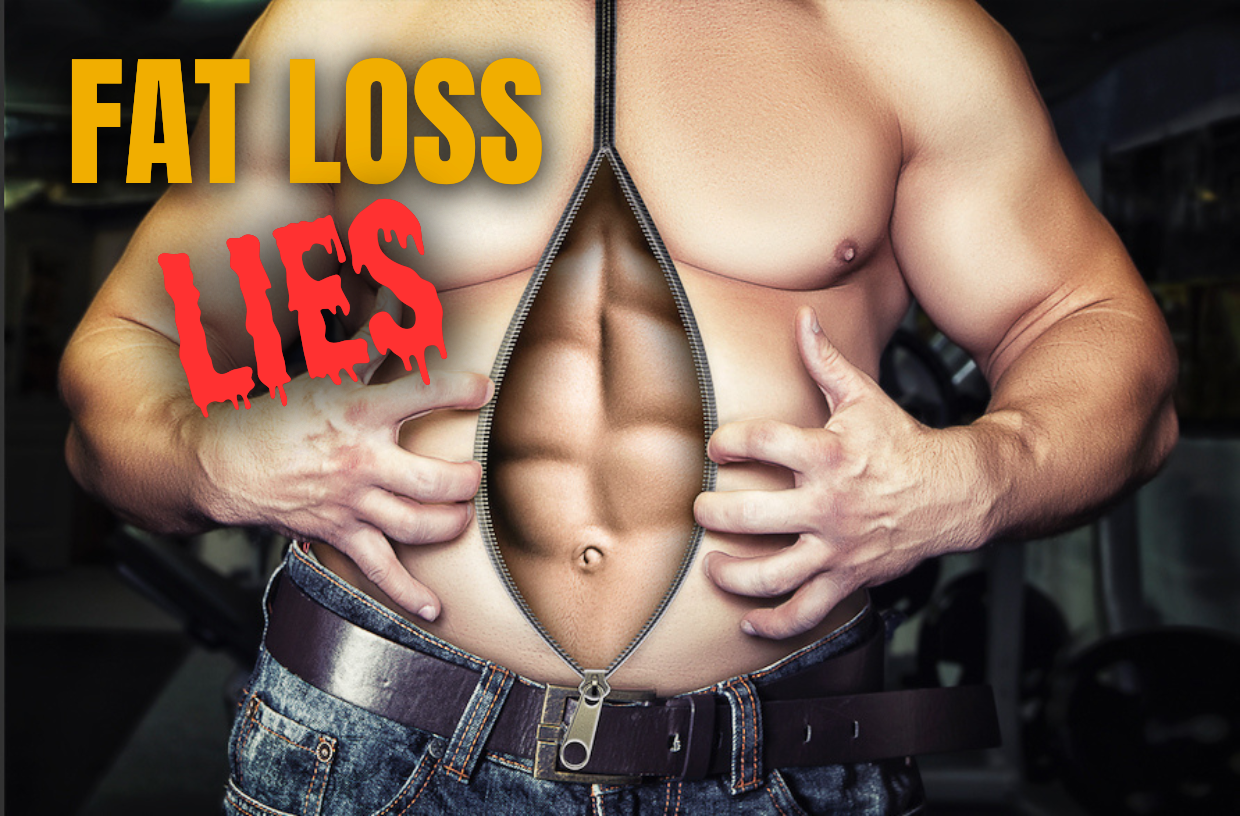
If you want to get lean, you have to start with the basics: a calorie deficit in which you eat fewer calories that the body is used to getting, weight training to build metabolism-boosting muscle, and some cardio for good measure. Pretty straightforward. But what aren’t so simple are the multiple bits of misinformation that often keep well-intentioned bodybuilders from having ripped-to-the bone physiques on contest day. These half-truths and myths permeate gyms, Internet boards, and even popular bodybuilding magazines! If you want to get lean, you have to know what to do, but you also have to know what not to do.
MYTH #1: YOU HAVE TO DO LOTS OF CARDIO
 FACT: You don’t have to do cardio! Arnold didn’t. Sergio Oliva didn’t. Dorian hardly did. When it comes to getting lean and ripped, cardio is overrated. Here’s why: First, you burn a heck of a lot more fuel from training hard than you ever will from sitting on a bike or working the treadmill. Second, training combined with the right nutrition approach is the overwhelming and premier duo that results in fat loss. Cardio is nothing more than an “extra” at best and another way to create a calorie imbalance. The cardio craze and misinformation has led lots of bodybuilders to make cardio their major tactic to get leaner. Aside from killing muscle recovery, excess cardio lowers testosterone levels, which makes muscles look softer. It also causes an adaptation response in the body in which calories are conserved. By that, I mean that the longer you do cardio, the more efficient your body becomes at doing the work. It gets you through that hour of cardio, but by burning fewer calories. Each successive week that you do, say, two 45-minute cardio sessions a day, the body gets the work done on fewer calories. If the body didn’t work that way, cardio could get you ripped to the bone. In fact, if cardio were extremely effective and resulted in dramatic drops in body fat, it would make sense to hit three 60-minute sessions a day!
FACT: You don’t have to do cardio! Arnold didn’t. Sergio Oliva didn’t. Dorian hardly did. When it comes to getting lean and ripped, cardio is overrated. Here’s why: First, you burn a heck of a lot more fuel from training hard than you ever will from sitting on a bike or working the treadmill. Second, training combined with the right nutrition approach is the overwhelming and premier duo that results in fat loss. Cardio is nothing more than an “extra” at best and another way to create a calorie imbalance. The cardio craze and misinformation has led lots of bodybuilders to make cardio their major tactic to get leaner. Aside from killing muscle recovery, excess cardio lowers testosterone levels, which makes muscles look softer. It also causes an adaptation response in the body in which calories are conserved. By that, I mean that the longer you do cardio, the more efficient your body becomes at doing the work. It gets you through that hour of cardio, but by burning fewer calories. Each successive week that you do, say, two 45-minute cardio sessions a day, the body gets the work done on fewer calories. If the body didn’t work that way, cardio could get you ripped to the bone. In fact, if cardio were extremely effective and resulted in dramatic drops in body fat, it would make sense to hit three 60-minute sessions a day!
MYTH #2: A CALORIE IS A CALORIE
 FACT: The fact is that 100 calories actually are equal to 100 calories. There can be no debate there. It’s like saying a single 100-dollar bill isn’t the same as 100 one-dollar bills. Sure it is. The difference when it comes to calories is in the way the body handles and responds to different types of calories, or the way the body
FACT: The fact is that 100 calories actually are equal to 100 calories. There can be no debate there. It’s like saying a single 100-dollar bill isn’t the same as 100 one-dollar bills. Sure it is. The difference when it comes to calories is in the way the body handles and responds to different types of calories, or the way the body
“spends” those calories. The body is more effi cient (i.e., better) at depositing 100 calories of candy bar as body fat than at throwing 100 calories of oatmeal into body fat reserves. One reason is hormonal. Some foods increase insulin levels more than others, and insulin can exert a double whammy. It seals off fat cells, making it harder for the body to dig into and burn body fat, and it facilitates carbs into fat-storing pathways and allows fatty acids from dietary fat to trigger fat storage. With regard to protein, the body responds to 100 calories of (for example) fish, by first using those calories—or the amino acids in the fish—for muscle repair. Only thereafter will any excess aminos have the ability to be stored as body fat. First, any “leftover” amino acids have to be converted to glucose. That process actually uses up some calories. Then, once converted into glucose, the glucose might first be deposited into muscles as muscle glycogen, the storage form of glucose in muscle. Only after glycogen is closer to “full” will additional glucose be stored as body fat. So, there’s surely some wisdom and reasoning behind the idea that not all calories have the same effect on making you fat. In the grand scope of things, you can’t eat more calories than the body needs and still shed fat. However, the types of calories you eat and the foods you choose ultimately have an impact on body fat levels.
MYTH #3: TO LOSE ONE POUND OF FAT YOU NEED TO CUT 3,500 CALORIES
 FACT: While a pound of fat is made up of 3,500 calories, dropping a pound of fat requires adjusting your caloric intake downward without stimulating the starvation response. The starvation response, characterized by hoarding of body fat and a drop in metabolism, is brought on by aggressive reductions in calories, which is sometimes defined as eating 15 percent fewer calories than normal. For example, a large bodybuilder eating 3,500 calories a day can shed a pound of fat by reducing to about 3,000 daily calories, or about 3,500 fewer calories per week. That’s around 15 percent fewer calories. However, we all know bodybuilders who, on paper, should be ripped to the bone. Between getting lots of cardio and consuming very low calories, they’re clearly eliminating far more than 3,500 calories a week from their diets. The result: The real-world fat loss doesn’t equal the math. The reason? The way you reduce the 3,500 calories—with extreme caution—can allow you to burn off fat without killing the metabolism.
FACT: While a pound of fat is made up of 3,500 calories, dropping a pound of fat requires adjusting your caloric intake downward without stimulating the starvation response. The starvation response, characterized by hoarding of body fat and a drop in metabolism, is brought on by aggressive reductions in calories, which is sometimes defined as eating 15 percent fewer calories than normal. For example, a large bodybuilder eating 3,500 calories a day can shed a pound of fat by reducing to about 3,000 daily calories, or about 3,500 fewer calories per week. That’s around 15 percent fewer calories. However, we all know bodybuilders who, on paper, should be ripped to the bone. Between getting lots of cardio and consuming very low calories, they’re clearly eliminating far more than 3,500 calories a week from their diets. The result: The real-world fat loss doesn’t equal the math. The reason? The way you reduce the 3,500 calories—with extreme caution—can allow you to burn off fat without killing the metabolism.
MYTH #4: KETONES NEED TO BE VISIBLY PRESENT TO BURN FAT
 FACT: Ketones are byproducts of fat breakdown that indicate fat is being burned as energy. Ketones also exert an anti-catabolic or muscle-preserving effect. The no-carb diet fans believe that when they show up in the urine (they actually measure ketones by closing the bathroom door and urinating on a stick to measure ketones), fat is being burned. True. However, they also fall for the trap, believing that if ketones aren’t present, it’s impossible to get lean. Dead wrong. First, the body can use some of those ketones as energy, thereby “soaking up” ketones and leaving few, if any, to show up on the pee stick. Second, you can burn fat without producing an abundant amount of ketones simply by stressing fundamentals: hard training in the 6- to 12-rep range to induce a metabolism-boosting anabolic effect, a mild reduction in calories and a moderate carb intake, and mild amounts of cardio.
FACT: Ketones are byproducts of fat breakdown that indicate fat is being burned as energy. Ketones also exert an anti-catabolic or muscle-preserving effect. The no-carb diet fans believe that when they show up in the urine (they actually measure ketones by closing the bathroom door and urinating on a stick to measure ketones), fat is being burned. True. However, they also fall for the trap, believing that if ketones aren’t present, it’s impossible to get lean. Dead wrong. First, the body can use some of those ketones as energy, thereby “soaking up” ketones and leaving few, if any, to show up on the pee stick. Second, you can burn fat without producing an abundant amount of ketones simply by stressing fundamentals: hard training in the 6- to 12-rep range to induce a metabolism-boosting anabolic effect, a mild reduction in calories and a moderate carb intake, and mild amounts of cardio.
MYTH #5: YOU SHOULD NEVER EAT BEFORE BED
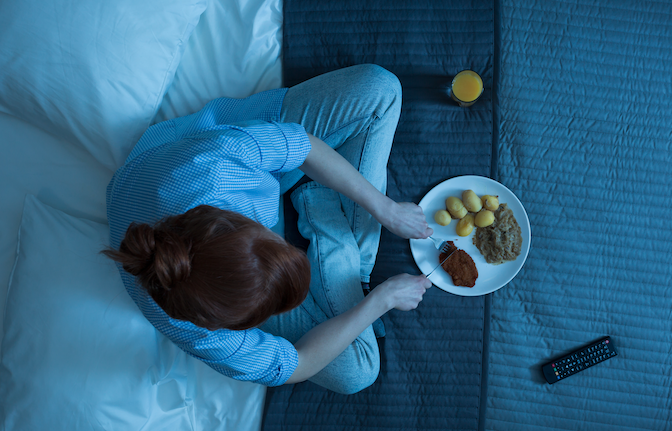 FACT: It isn’t the best idea to eat carbs before bed because, to some degree, they block the natural release of growth hormone (GH) that occurs within the first 90 minutes of sleep, and GH helps lean the body down. However, if you train at night, you absolutely should eat after training. This should include a large portion of carbs along with lean protein. Skipping the meal or just relying on protein will inhibit tissue repair. Plus, the carbs you eat after training will be driven into muscles. In turn, this leaves the amount of carbs in the blood fairly low, and lower blood levels of carbs (i.e., blood sugar) are conducive to the GH surge that occurs with sleep.
FACT: It isn’t the best idea to eat carbs before bed because, to some degree, they block the natural release of growth hormone (GH) that occurs within the first 90 minutes of sleep, and GH helps lean the body down. However, if you train at night, you absolutely should eat after training. This should include a large portion of carbs along with lean protein. Skipping the meal or just relying on protein will inhibit tissue repair. Plus, the carbs you eat after training will be driven into muscles. In turn, this leaves the amount of carbs in the blood fairly low, and lower blood levels of carbs (i.e., blood sugar) are conducive to the GH surge that occurs with sleep.
MYTH #6: THE NO-CARB APPROACH RESULTS IN MAXIMUM FAT LOSS
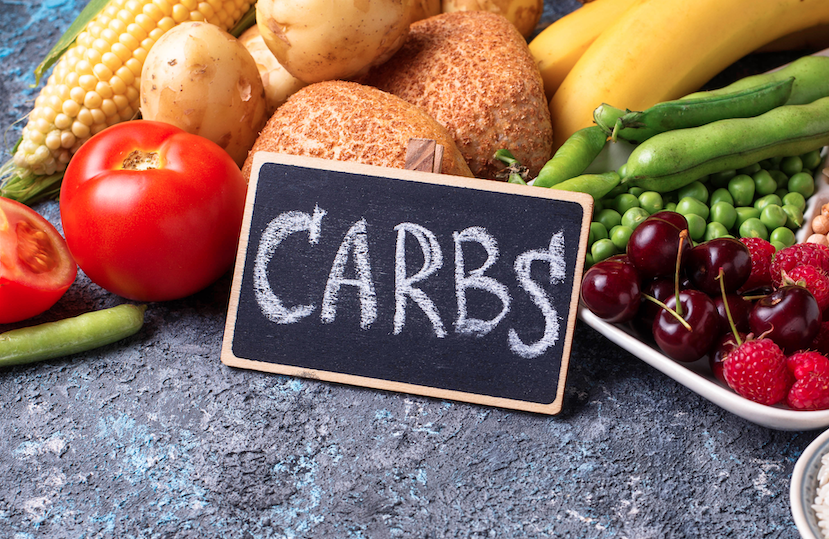 FACT: Lots of people hate carbs, with good reason. Besides adding calories to the diet, they regulate a hormonal response that can trigger fat gains. Carbs cause the secretion of insulin, which acts as a switch, turning on the fat-storing pathways. The fat-loss idea—drop carbs and watch body fat fall off—works somewhat. Let me explain: The problem with a no-carb approach is that it eventually segues into a catabolic state in which protein is burned as fuel. Some of that protein comes from muscle tissue and when muscle is burned, the metabolism—the body’s internal calorie-burning engine—slows. Since carbs are a great source of training fuel, eating no carbs can kill training intensity. When your training takes a hit, say goodbye to maximum changes to your physique.
FACT: Lots of people hate carbs, with good reason. Besides adding calories to the diet, they regulate a hormonal response that can trigger fat gains. Carbs cause the secretion of insulin, which acts as a switch, turning on the fat-storing pathways. The fat-loss idea—drop carbs and watch body fat fall off—works somewhat. Let me explain: The problem with a no-carb approach is that it eventually segues into a catabolic state in which protein is burned as fuel. Some of that protein comes from muscle tissue and when muscle is burned, the metabolism—the body’s internal calorie-burning engine—slows. Since carbs are a great source of training fuel, eating no carbs can kill training intensity. When your training takes a hit, say goodbye to maximum changes to your physique.
Instead of looking crazy-hard, you end up looking flat. Ditch the no-carb approach for a moderate to low carb intake.
MYTH #7: YOU SHOULD NEVER EAT JUNK FOOD
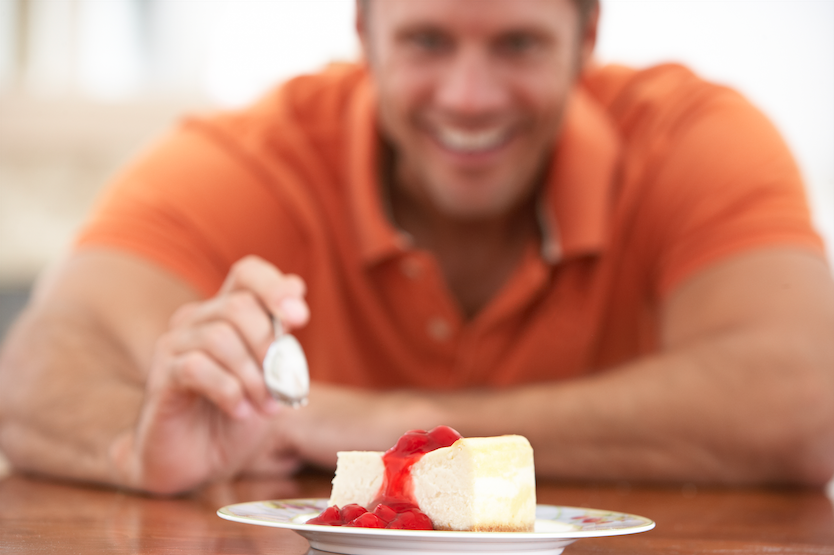 FACT: Pizza, cheesecake, bread, steak, pasta with sauce, and desserts all have one thing in common: They aren’t diet foods and, by themselves, probably aren’t going to get you lean. But they can help, when used appropriately. One problem with all types of diets is that, in response to eating less, the body downshifts its metabolism and burns less! That’s why I often allow people to take a break and eat these “crappy” foods once every fi ve to seven days. The reason? Including these calorierich foods increases caloric intake, and one or two meals of these a week are usually enough to temporarily interrupt the metabolic slowdown that comes with any diet. In short, it tricks the body into believing the
FACT: Pizza, cheesecake, bread, steak, pasta with sauce, and desserts all have one thing in common: They aren’t diet foods and, by themselves, probably aren’t going to get you lean. But they can help, when used appropriately. One problem with all types of diets is that, in response to eating less, the body downshifts its metabolism and burns less! That’s why I often allow people to take a break and eat these “crappy” foods once every fi ve to seven days. The reason? Including these calorierich foods increases caloric intake, and one or two meals of these a week are usually enough to temporarily interrupt the metabolic slowdown that comes with any diet. In short, it tricks the body into believing the
“diet” is over and prevents the metabolism from falling further.
MYTH #8: HIGH REPS BURN FAT
 FACT: They don’t. They usually cause you to shrink and get flat. Flat muscles don’t “pop” or appear dense. For most, high reps means using less weight and “repping out” rather than remaining in the 6- to 12-rep range and working as heavy as possible. The problem: High reps remove the maximum stimulus off the muscles that signals muscle fiber recruitment. When you remove the stimulus for recruitment, it’s easy to slip out of an anabolic state, and heavy weights, more so than higher reps and lighter weight, cause more microscopic damage to muscle fibers. When muscle fibers experience trauma, they require additional energy (calories) to pull out of a trauma state and start the rebuilding process. When you train hard in the 6- to 12-rep range, muscles require calories for a full 24 hours thereafter to mend damaged fibers. The act of muscle repair is a calorie-needy event. With higher reps, it’s possible to never really cause significant trauma that induces a metabolic state in which the calorie-burning engine in the body rises after you leave the gym. All of the calorie burn comes from simply doing the reps.
FACT: They don’t. They usually cause you to shrink and get flat. Flat muscles don’t “pop” or appear dense. For most, high reps means using less weight and “repping out” rather than remaining in the 6- to 12-rep range and working as heavy as possible. The problem: High reps remove the maximum stimulus off the muscles that signals muscle fiber recruitment. When you remove the stimulus for recruitment, it’s easy to slip out of an anabolic state, and heavy weights, more so than higher reps and lighter weight, cause more microscopic damage to muscle fibers. When muscle fibers experience trauma, they require additional energy (calories) to pull out of a trauma state and start the rebuilding process. When you train hard in the 6- to 12-rep range, muscles require calories for a full 24 hours thereafter to mend damaged fibers. The act of muscle repair is a calorie-needy event. With higher reps, it’s possible to never really cause significant trauma that induces a metabolic state in which the calorie-burning engine in the body rises after you leave the gym. All of the calorie burn comes from simply doing the reps.
MYTH #9: FAT MAKES YOU FAT
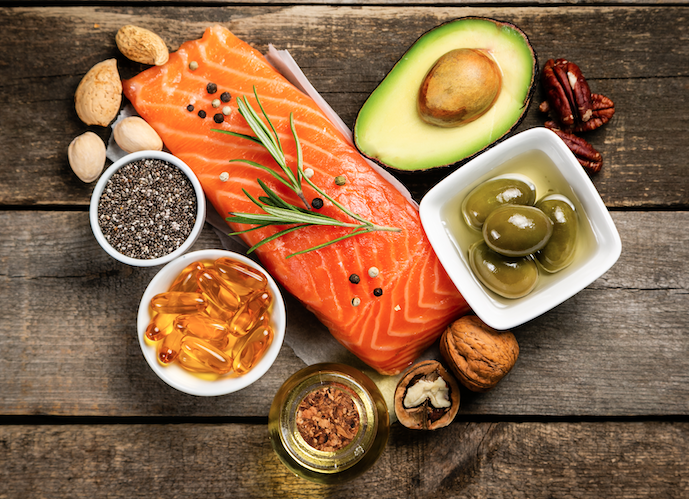 FACT: I’m all for eating leaner proteins (i.e., poultry, fish, egg whites, and protein powder). It’s the best way to keep overall calories lower. When fat is low, you can also eat moderate amounts of carbs such as oatmeal, whole-grain bread, and potatoes. You just need enough to energize your workouts, and that’s about it. With fat, people go overboard and think all fat will lead to an increase in body fat or a slowdown in fat loss. Not true. The fat in red meat and eggs helps make the cholesterol the body needs to manufacture hormones, including testosterone, which supports fat metabolism and growth. Omega-3 fats in some fish may actually help you get leaner as long as calories are slightly lower than what the body needs. With fat, it’s like carbs: The “no” approach is extreme and will likely backfire in the long haul.
FACT: I’m all for eating leaner proteins (i.e., poultry, fish, egg whites, and protein powder). It’s the best way to keep overall calories lower. When fat is low, you can also eat moderate amounts of carbs such as oatmeal, whole-grain bread, and potatoes. You just need enough to energize your workouts, and that’s about it. With fat, people go overboard and think all fat will lead to an increase in body fat or a slowdown in fat loss. Not true. The fat in red meat and eggs helps make the cholesterol the body needs to manufacture hormones, including testosterone, which supports fat metabolism and growth. Omega-3 fats in some fish may actually help you get leaner as long as calories are slightly lower than what the body needs. With fat, it’s like carbs: The “no” approach is extreme and will likely backfire in the long haul.
MYTH #10: WATER MAKES YOU LEAN
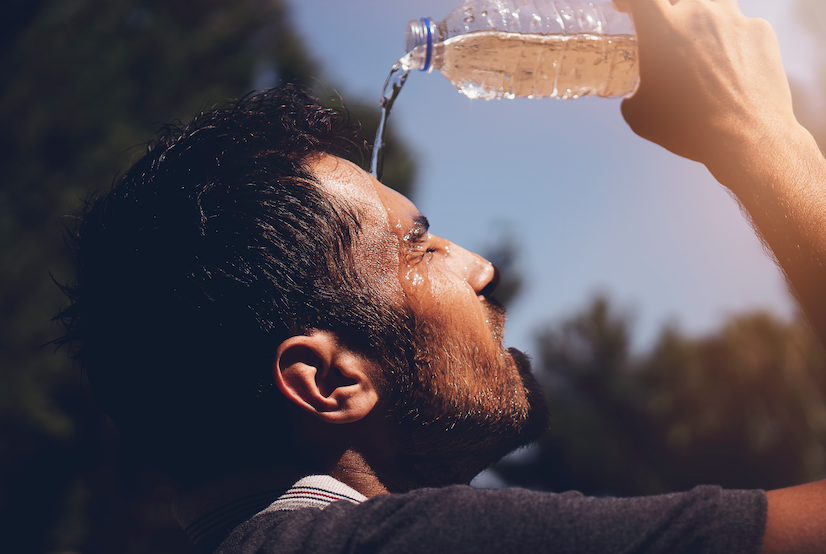 FACT: This one is the silliest myth of all! The idea that drinking until you’re running to the bathroom all day will make you leaner is crazy! The real truth is that dehydration can slow the metabolism, sort of like how having low oil might impede a car’s engine performance. But taking the correlation between dehydration and a slower metabolism and flipping it into the idea that excess water will melt fat is a big stretch.
FACT: This one is the silliest myth of all! The idea that drinking until you’re running to the bathroom all day will make you leaner is crazy! The real truth is that dehydration can slow the metabolism, sort of like how having low oil might impede a car’s engine performance. But taking the correlation between dehydration and a slower metabolism and flipping it into the idea that excess water will melt fat is a big stretch.
To keep up with the latest fitness industry news and product releases, subscribe to our free newsletter HERE!
*© Copyright Notice: Muscle Insider can’t always determine which images are protected by copyrights. We use images that are part of the public record and believed to be under the public domain. If for some reason somebody believes copyrights are violated, we will remove or replace the content in question after receiving a DMCA notice.

